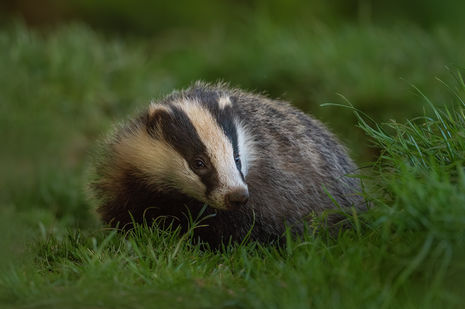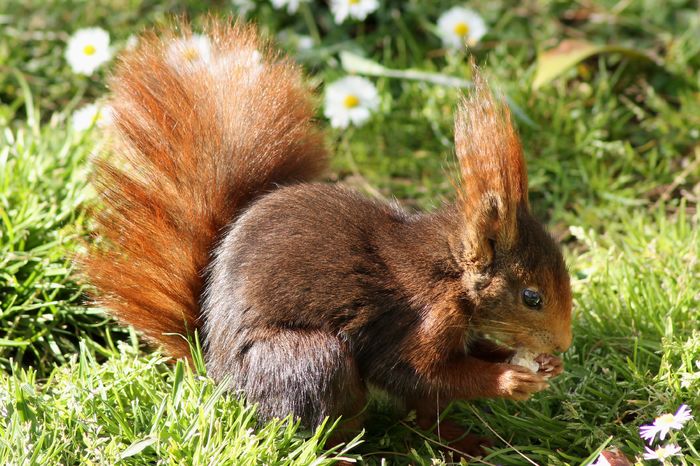Under pressure: Brian May and the badger cull controversy
Joanna Vieira O’Neill explains why badger culling is not a black and white issue

Sir Brian May's new documentary, ‘Brian May: The Badgers, The Farmers and Me’ was recently released on BBC2, following his long-standing campaign against badger culling — sparking both praise and backlash. The badger cull, which began in 1975, has been a contentious issue in both scientific and agricultural communities, with debates extending into the wider public sphere. The discussion has recently made headlines again with the Labour government restating their manifesto promise to end the ineffective culling by 2029. This controversy, however, has roots in a much older issue: bovine tuberculosis (TB), which caused thousands of human deaths annually in the United Kingdom less than 100 years ago. So, why are we culling badgers, what insights does Brian May offer, and what reaction did one bovine TB expert have?
Why are we culling badgers?
Whilst Brian May’s contributions to British rock during his time as Queen’s lead guitarist will go down in history, his prominent role opposing the badger cull has made him rather unpopular in farming communities, which generally are in favour of badger culling to reduce the spread of bovine TB.
Bovine tuberculosis is a chronic infectious disease in cattle, primarily caused by Mycobacterium bovis, a member of the Mycobacterium tuberculosis complex, which includes bacteria that cause tuberculosis in humans and other animals. M. bovis can spread to humans through unpasteurised milk, resulting in up to 2,500 deaths per year in the United Kingdom until widespread milk pasteurisation began in the 1930s.
Bovine TB represents a significant socioeconomic issue, as control strategies are estimated to cost the taxpayer more than £150 million annually, with an additional burden of £50 million on farmers. In the year leading up to March 2024, nearly 33,000 cattle in Great Britain were slaughtered due to a TB incident, i.e. cattle had either tested positive or had direct contact with positive cattle. A national eradication strategy was first put in place in the UK in 1950, with Scotland being Officially Tuberculosis Free (OTF) (as defined by the European Union) since 2009. In 2014, the Department for Environmental, Food and Rural Affairs (DEFRA) stated its aim for England to reach OTF status by 2038. Current surveillance and control strategies involve pre- and post-movement testing of cattle, routine testing of herds (risk-based) and routine post-mortem inspection of slaughtered cattle — as well as badger culling in permitted counties.
"badger culling cannot meaningfully contribute to the future control of cattle TB in Britain"
Following the discovery of a TB-infected badger in Gloucestershire in 1971, badgers have been implicated as a possible wildlife reservoir for bovine TB in the UK and despite their protected status through the Badger Act of 1973, culling began in 1975. Since then, high-profile badger culling trials, notably the Randomised Badger Culling Trial (RBCT) in England, have taken place. Different analyses of the RBCT results have yielded contradictory conclusions, with the results from the Independent Scientific Group (ISG) report in 2007 stating that ‘badger culling cannot meaningfully contribute to the future control of cattle TB in Britain’, despite the fact that badgers are ‘clearly a source of cattle TB’. On the other hand, a contrasting analysis of the RBCT data by the King Group (2007) argued that badger culling ‘could make a significant contribution to the control of cattle TB’. Badger culling continues to take place under licence, with nearly 20,000 badgers killed in 2023.
“Brian May: The Badgers, The Farmers and Me”
The title of Brian May’s documentary quite aptly reflects the fact that no scientific experts on Bovine TB were explicitly consulted. The emotive tone of the programme (set to the musical backdrop of Queen) is however appropriate to the severe mental burden which bovine TB places on farmers and the strength of public sensitivities surrounding badger culling. As acknowledged by May, it is all too easy to demonise farmers taking part in the culling as ‘unfeeling’ without appreciating that this is a disease which threatens their herd and their livelihood, often a generational agricultural tradition. Farmer Malcolm Huxtable is shown in tears after a positive result to the tuberculosis skin test in one of his cows, likely resulting in strict herd restrictions, testing and culling of cattle — a herd breakdown — which can take months or even years to lift. Just moments later, there is a poignant and rather symbolic moment in which May and Huxtable shake hands, perhaps representing the documentary’s hope to bring together the farming and badger activist communities.
"it is all too easy to demonise farmers taking part in the culling"
What do the experts have to say?
I spoke to Professor James Wood, a veterinary epidemiologist from the University of Cambridge who has been at the forefront of bovine tuberculosis research and policy for over 10 years, including sitting on the DEFRA TB Advisory board since 2012. His main concerns included the “highly misleading” narrative of the documentary to the general public, whether intentional or not.
The show portrays Brian May’s team’s TB control efforts, especially in relation to slurry hygiene management, as wholly successful, despite a cursory disclaimer in the end credits stating that the farm did in fact experience another herd TB breakdown. Furthermore, Wood does see this as a “valuable case study” but warns against completely ignoring the scientific evidence of badgers contributing to the bovine TB transmission cycle.
Secondly, Wood also highlighted published literature dating back over a decade, which examines the limitations of the tuberculosis skin test. This is rightly discussed in the documentary but almost presented as a novel revelation, without mentioning how the insensitivity of the skin test is addressed in current control strategies, such as using a different, more sensitive interpretation of the skin test in the event of a herd breakdown.
Overall, Professor Wood believes the program is "sensationalised," as it focuses heavily on badger culling while neglecting the broader bovine TB control strategies. These include strict herd restrictions, rigorous testing, and surveillance. He feels the program portrays badger culling as the farmers’ shortcut, rather than acknowledging that the farming community is doing everything possible to control the disease. In reality, most farmers are highly dedicated and under constant threat of devastating consequences from bovine TB outbreaks, such as herd restrictions, loss of trade, and the culling of cattle. Whilst this is probably obvious to those previously involved in this issue, it risks being a misrepresentation to the wider public who may only see one piece of the puzzle.
"the program portrays badger culling as the farmers’ shortcut"
The documentary does a good job at humanising both sides but lacks scientific foundation by dismissing the peer-reviewed evidence surrounding badger contributions to bovine TB transmission. Instead, Brian May says that he doesn’t believe the evidence and even if he did, he still wouldn’t support the cull — this alone outlines the context and intention of the program. However, without an effective alternative, it seems many are in favour of continuing the badger culls, including the National Farmers Union Cymru and the British Cattle Veterinary Association which have been reported to be ‘disappointed’ at the documentary.
The new Labour government has doubled down on their manifesto pledge to end the badger cull by rolling out a ‘TB eradication package including vaccination, herd management and biosecurity measures’ to achieve OTF status — an outcome which will surely be welcomed if these supplementary measures are effective in preventing the spread and burden of bovine TB. However, the current lack of evidence surrounding the population-level efficacy of cattle vaccination and related difficulties in testing, combined with the logistics and costs of implementing a badger vaccination policy, are likely to pose great challenges which will need to be overcome in order to prevent the situation worsening.
Nevertheless, reigniting the discussion around bovine TB and badger culling will hopefully result in positive momentum and collaboration between policy makers, farmers, badger activists and, crucially, scientific experts. Ultimately, by grounding policy in sound science, we can continue to ensure that future bovine TB control strategies are effective and economically sustainable, whilst safeguarding public health and protecting badgers — a protected and treasured part of Britain’s native wildlife.
 News / Cambridge bus strikes continue into new year16 January 2026
News / Cambridge bus strikes continue into new year16 January 2026 News / Uni members slam ‘totalitarian’ recommendation to stop vet course 15 January 2026
News / Uni members slam ‘totalitarian’ recommendation to stop vet course 15 January 2026 Science / Why smart students keep failing to quit smoking15 January 2026
Science / Why smart students keep failing to quit smoking15 January 2026 Interviews / The Cambridge Cupid: what’s the secret to a great date?14 January 2026
Interviews / The Cambridge Cupid: what’s the secret to a great date?14 January 2026 Comment / Will the town and gown divide ever truly be resolved?12 January 2026
Comment / Will the town and gown divide ever truly be resolved?12 January 2026









